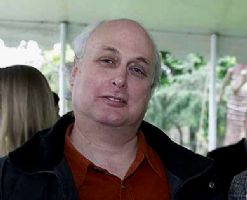|
Index
| Trombone Ensembles
| CD's
| Manufacturers
| Jazz Styles
| Jazz Clubs
| Jazz
Festivals
| Trombone
News
| Comments
| Contact
|
|||
|
|
|||
|
SCOTT
YANOW Scott
Yanow Jazz
on Film: The Complete Guide of the Musicians and Music on Screen In the circles of jazz, author, critic and scholar Scott Yanow is a ubiquitous figure, his commentary appearing in countless album liner notes, books, and articles. He is a writer with a considerable breadth of knowledge on the subject of jazz and in Jazz on Film, Yanow gives us a broad overview of filmed performances by jazz luminaries and other artists not as well known but equally important. Compared with other musical genres, jazz is woefully underrepresented on film, but this book contains vital information for rabid aficionados and newbies alike a wealth of information. The book covers performance films currently available on home video, Hollywood films that contain jazz performances, "Soundies" (the forerunners of contemporary music videos that were viewed through jukebox-styled devices in the Forties) as well as numerous performances from the early days of television, many of which have been issued on VHS and DVD. The films he has chosen to spotlight cover a wide variety of jazz styles, from Dixieland and the British Trad-Jazz movement, to swing, bebop, the avant-garde and fusion. Even the most ardent jazz fan will find plenty of new avenues to explore, including musicians who were well documented on film but somehow escaped wider recognition. Fine examples of these are the entries documenting the all-female bands of the 30s and 40s, most notably Ida Ray Hutton and her talented orchestra. By far, the most well documented era of filmed jazz performances occurred during the Swing era, when America's jazz stars such as Benny Goodman, The Dorsey Brothers and Duke Ellington were in high demand to appear in Hollywood pictures. Although their performances were often highlights in otherwise underwhelming films and, for black performers such as Duke and Louis Armstrong, the settings for such performances were often less than tasteful, nevertheless, the surviving footage is invaluable in preserving the history of this music. Yanow's critical eye is fair and sometimes deliciously barbed, especially when turning his attention to films and videos often lauded beyond their stations. His sharp (and accurate) mauling of Ken Burns' epic Jazz focuses on the many factual flubs and fabrications, exposing Burns' work as poorly researched and misleading. Yanow knows his stuff and isn?t afraid to shake a few trees to get his point across with deadpan, no-nonsense evaluations in every entry. Jazz on Film is certain to become the primary reference guide for critics, students and fans. One
hopes that many great performances locked in the vaults of television
networks around the world will come to see the light of day.
Numerous performances of American jazz royalty in Europe haven?t
been seen in the decade since their original broadcasts. Ownership
and publishing rights have kept a tight clamp on these pieces
of film and videotape that deserve to be seen. Perhaps successive
volumes of Jazz on Film will expand with the wider availability
of these and other undiscovered gems. For now, Yanow has presented
a smart, easy-to-use reference guide with lots of surprises.
|


